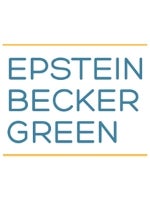President Trump’s recently issued Executive Order entitled “Strengthening Retirement Security In America” (the “EO”) may be helpful to businesses that sponsor or participate in multiple employer retirement plans (“MEPs”), as well as single employer plans, even if the sponsors and employers are not small business owners. While the stated purpose of the EO, which was issued on August 31, 2018 (the “EO Date”), is to “promote retirement security for America’s workers,” the EO directs attention to small business owners (less than 100 employees), noting that such businesses are less likely than larger businesses to offer retirement benefits. The EO also notes that regulatory burdens and complexity can be costly and discourage businesses, especially small ones, from offering retirement plans to employees. This post summarizes the four actions identified in the EO that the Federal Government may take to promote retirement security. While these actions are intended to benefit small businesses, large businesses that participate may benefit as well.
First, the EO may expand the circumstances under which a business or organization can sponsor or participate in an MEP. The EO directs the Secretary of Labor to consider, within 180 days following the EO Date, proposing regulations to clarify when a group or association of employers or other appropriate business or organization can be treated as an “employer” within the meaning of Section 3(5) of the Employee Retirement Income Security Act of 1974, as amended (“ERISA”). The definition of “employer” is significant, as an employee benefit plan, such as an MEP, is typically sponsored by an “employer”. (An “employee organization”, such as a labor union, may also sponsor an employee benefit plan.) If an MEP were sponsored by businesses that were not considered a “group or association of employers” pursuant to Section 3(5) of ERISA, the MEP would not be treated as a single plan covering all of the participating businesses. In that case, each business participating in the MEP would be treated as sponsoring its own plan for all purposes under ERISA and would have to separately comply with ERISA’s requirements, such as preparing a written plan document and summary plan description, having an ERISA bond, and filing a Form 5500. Clarification of the term “employer” may allow businesses that sponsor or participate in single employer plans to treat such plans as an MEP and thereby minimize their individual responsibilities under ERISA. The clarification may also create new opportunities for businesses to sponsor MEPs.
Second, the EO may reduce compliance burdens for MEP sponsors. The EO directs the Secretary of the Treasury to consider, within 180 days following the EO Date, amending regulations to modify the rule providing that if one participating employer in an MEP fails certain non-discrimination requirements, the entire MEP fails. For example, under current Treasury regulations, the actual deferral percentage test and actual contribution percentage test are applied separately to each participating employer in the MEP, as if that employer maintained a separate plan. If one participating employer fails one of the tests, then the MEP fails the test and could potentially be disqualified for all participating employers. This regulation can present a dilemma for MEP sponsors, as they cannot be certain that each participating employer will satisfy the non-discrimination requirements. Therefore, modification of the regulations should benefit businesses that sponsor MEPs.
Third, the EO may reduce the costs associated with required disclosures to participants in MEPs, and in single employer plans. The EO directs the Secretaries of Labor and Treasury to review, within one year following the EO Date, actions that could make retirement plan disclosures more useful for participants, while reducing costs for sponsors and participating employers.
Finally, the EO directs the Secretary of the Treasury to determine, within 180 days following the EO Date, whether the actuarial tables used to calculate the amount of required minimum distributions should be updated annually (or on another periodic basis) to reflect current mortality data. This update could reduce the amount of annual required minimum distributions, which would benefit participants in single employer plans, as well as in MEPs. Such change could also reduce the administrative burden on plan sponsors and participating employers associated with making these distributions.
Takeaways
If the actions described above result in changes in law, such changes should benefit businesses that sponsor or participate in MEPs and single employer plans. In addition, such changes may provide new opportunities for businesses to sponsor MEPs. Given the time frames imposed by the EO, businesses might see proposed regulations or other guidance addressing some of these changes during 2019.




 />i
/>i

